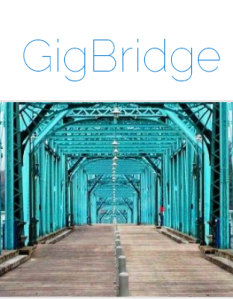For immediate release
Carmen Gonzales and Honeydi Velasquez have been announced as the winners of the first GigBridge STEM competition. The 8-week program culminated with an awards ceremony on Nov. 14 where Mayor Andy Berke gave opening remarks and presented all participants in the program with certificates of completion.
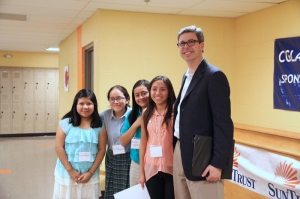 GigBridge is an application development program pertaining to obesity and is designed to introduce students to mobile application development, alleviate linguistic disparities, and increase awareness about obesity risk and prevention. GigBridge is funded by the Mozilla Gigabit Fund.
GigBridge is an application development program pertaining to obesity and is designed to introduce students to mobile application development, alleviate linguistic disparities, and increase awareness about obesity risk and prevention. GigBridge is funded by the Mozilla Gigabit Fund.
In his remarks, Mayor Berke shared his excitement for the students of Chattanooga Girls Leadership Academy (CGLA) and East Lake Academy (ELA) who participated in the STEM afterschool program. Following his remarks, the six participating teams presented their apps to a panel of judges. Winners Gonzales and Velasquez are 9th and 7th grade students at CGLA.
They, along with 13 other students, worked in the GigBridge program learning about preventing and reducing obesity and then translated their knowledge into a mobile app using the online app creator Appy Pie. Spanish-speaking students created their apps in their native language while working with language mentors to translate them to English.
Anjali Chandra, a GPS senior and founder of Global Excel, GigBridge’s umbrella nonprofit, said of the teams’ efforts, “It was amazing to see the students who came in not knowing how to use Google Docs or login into GMail, grasp the basics of app development, and create elaborate slides for their presentations today. The unique perspectives they brought to obesity prevention illuminated my own approach as well as that of the other mentors.” Project Coordinator for GigBridge, Alli Crumley, noted that the East Lake Academy students, all middle schoolers, were “committed and very excited to learn that even in middle school they had the capability to make an informative app.”
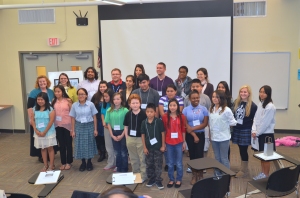 Competition judges included Dr. Mina Sartipi, an Associate Professor at the University of Tennessee Chattanooga, where she leads the Wireless Research Group. Judge Omar Diaz is a Senior IT Analyst at Utiflex Systems, and Judge Seun Erinle is the owner of A.I.R. Labs, and after school program for children ages 12-18 that teaches web development. Judge Brian Wleklinski is the CTO of RootsRated, a local web company specializing in providing active locals knowledge of a city’s outdoor indentity.
Competition judges included Dr. Mina Sartipi, an Associate Professor at the University of Tennessee Chattanooga, where she leads the Wireless Research Group. Judge Omar Diaz is a Senior IT Analyst at Utiflex Systems, and Judge Seun Erinle is the owner of A.I.R. Labs, and after school program for children ages 12-18 that teaches web development. Judge Brian Wleklinski is the CTO of RootsRated, a local web company specializing in providing active locals knowledge of a city’s outdoor indentity.
The East Lake Academy students who participated in GigBridge were Rocio Castillo, Marco Perez, Vanessa Perez, Luis Perez Xiloj, Michael Minor, Breanna Scoggina, Mikayla Crump, Zya Sharpley, and Irvin Castillo. The CGLA students were Carmen Gonzales, Honeydi Velasquez, Denya Jacobo, and Samantha Bautista.
Jill Pala, a GPS teacher and GigBridge Tech Mentor shared, “The girls at CGLA were enthusiastic participants. I’m really proud of all the GigBridge teams and the result of all of their hard work!”

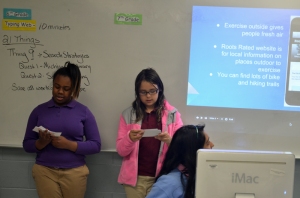 The GigBridge project will finish with a presentation of each team’s app. The app presentation will be judged. The top scoring team will be given a prize and the opportunity to have their app published in the marketplace.
The GigBridge project will finish with a presentation of each team’s app. The app presentation will be judged. The top scoring team will be given a prize and the opportunity to have their app published in the marketplace.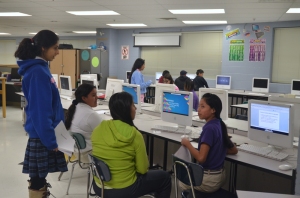 Once we established how Appy Pie could be used by the students they began designing their apps. They took time to decide their app names and the pages they would use.
Once we established how Appy Pie could be used by the students they began designing their apps. They took time to decide their app names and the pages they would use.